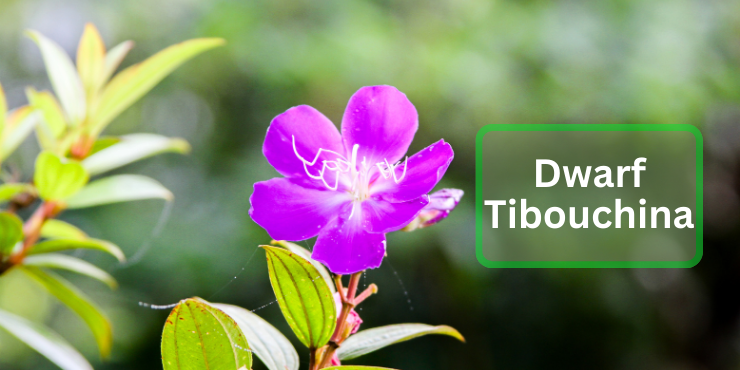Dwarf Tibouchina typically blooms from late spring through early fall, providing an extended period of floral beauty. This charming plant, with its lush foliage and stunning blooms, not only graces outdoor spaces with beauty but also thrives in a variety of climates. Join us on a article to discover the unique characteristics and versatile appeal of the Dwarf Tibouchina, as we explore its botanical wonders and celebrate the joy it brings to gardens around the world.
What is Dwarf Tibouchina?
Dwarf Tibouchina, scientifically known as Tibouchina granulosa, is a charming and compact flowering shrub that hails from the tropical regions of Brazil. Belonging to the Melastomataceae family, this plant is renowned for its stunning purple blooms and lush green foliage.
Features and Characteristics
Dwarf Tibouchina is celebrated for its unique features. The plant typically reaches a height of 2 to 3 feet, making it a perfect choice for both large gardens and smaller urban spaces. The velvety leaves add a touch of elegance, and when the plant bursts into bloom, it creates a mesmerizing spectacle.
Ideal Growing Conditions
For optimal growth and blooming, Dwarf Tibouchina thrives in well-draining, acidic soil. It enjoys partial shade but can tolerate full sun exposure. Adequate watering is crucial, ensuring the soil remains consistently moist but not waterlogged. This resilient plant can withstand a variety of climates, making it suitable for diverse gardening environments.
Popular Varieties
While the classic purple-flowered Tibouchina is widely popular, several varieties offer a spectrum of colors. Varieties such as ‘Jazzie’ with its vibrant pink blooms or ‘Alstonville’ boasting larger purple flowers provide gardeners with exciting choices.
Planting and Care Tips
Planting Dwarf Tibouchina is a straightforward process. Begin by selecting a suitable location with well-draining soil. Dig a hole twice the size of the plant’s root ball and place it, ensuring the top of the root ball is level with the soil surface. Water thoroughly after planting and maintain consistent moisture during the establishment phase.
Seasonal Maintenance
To encourage continuous blooming, regular pruning is essential. Trim the plant after each flowering season, removing dead or damaged branches. Applying a balanced fertilizer in spring and mid-summer contributes to healthy growth and vibrant blooms.
Common Issues and Solutions
Dwarf Tibouchina is generally hardy, but like any plant, it may face challenges. Keep an eye out for pests like aphids and scale insects. Neem oil or insecticidal soap can effectively address these issues without harming the plant.
Landscaping with Dwarf Tibouchina
The versatility of Dwarf Tibouchina makes it a fantastic addition to landscaping projects. Use it as a border plant, ground cover, or in containers to add a pop of color to your outdoor space.
Benefits of Dwarf Tibouchina
Beyond its aesthetic appeal, Dwarf Tibouchina offers various benefits. It attracts pollinators like butterflies and hummingbirds, contributing to a thriving ecosystem. Additionally, its compact size makes it an excellent choice for urban gardens and balconies.
Aesthetic Appeal in Gardens
Imagine a garden adorned with the rich hues of Dwarf Tibouchina’s blooms. Whether planted as a focal point or integrated into a flower bed, this charming shrub elevates the visual appeal of any garden.
Sustainable Gardening with Dwarf Tibouchina
For environmentally conscious gardeners, Dwarf Tibouchina aligns with sustainable gardening practices. Its adaptability reduces the need for excessive water and chemical inputs, fostering a more eco-friendly approach to landscaping.
Dwarf Tibouchina in Different Climates
While it thrives in tropical climates, Dwarf Tibouchina can adapt to a range of conditions. In temperate zones, it may behave as a deciduous plant, shedding leaves in colder months and regaining its lush appearance in spring.
Expert Tips for Growing Success
- Ensure proper drainage to prevent waterlogged soil.
- Prune selectively to shape the plant and encourage blooming.
- Monitor for pests and address issues promptly with organic solutions.
- Use a well-balanced fertilizer during the growing season.
- Share your gardening experiences with Dwarf Tibouchina on community platforms to learn and exchange tips.
Conclusion
Dwarf Tibouchina emerges as a delightful addition to any garden, offering a burst of color, easy maintenance, and versatility. Whether you’re an avid gardener or a beginner, this enchanting shrub promises a rewarding experience.
